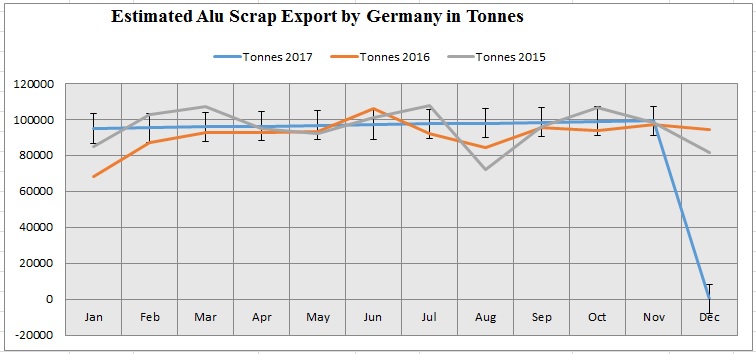

Germany is the major aluminium market in Europe and is home to the world’s largest automakers. The country contributes 25% of total aluminium consumption in Europe. German aluminium producers and processors produce about 560,000 tonnes of aluminium. It comprises about 260,000 tonnes of primary aluminium and 300,000 tonnes of recycled aluminium.
{newsStudioGallery}
{alcircleadd}The aluminium rolling mills account for the largest share of aluminium semis production and the largest customers for rolled aluminium semis are the automotive industry along with packaging and industrial applications. The automotive industry generates a large amount of aluminium scrap. Other than recovering secondary aluminium from the scrap domestically, the country also exports substantial amount of scrap every year.

According to the recent estimate, in 2015, Germany exported 1.1 million tons of aluminium scrap globally. The total revenue from scrap export amounts to about US$ 1.6 billion. Compared to 2015, in 2016, Germany is estimated to export an estimated 1 million tons of aluminium scrap globally. The total revenue from the export amounts to US$ 1.4 billion for the estimated amount.
Considering the trend in last two years the aluminium scrap export by the U.S. is estimated to reach 1 million tons in the first 11 months of 2017 and the revenue from export is estimated to be about USD 1.3 billion.
{googleAdsense}
The data shows a flat pattern with a slight upward trend for aluminium scrap export in Germany. The largest part of aluminium scrap is exported to Austria, Italy, Netherland and China. UK and France also import a considerable amount of scrap from Germany.
WMR Recycling, Harita Metals Co, ScholzAlu Stockach GmbH, TSR Recycling GmbH & Co. KG are some of the major scrap suppliers in Germany.



Responses






